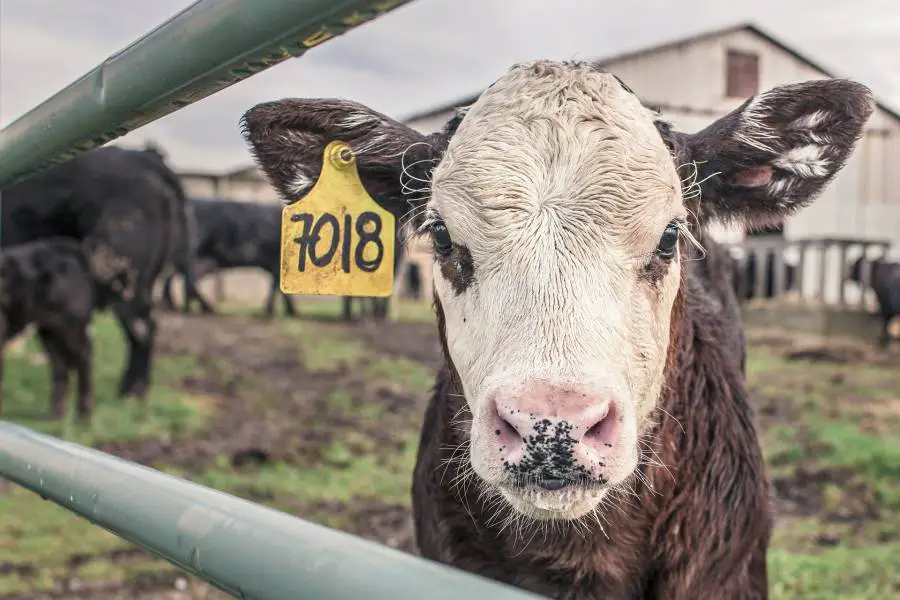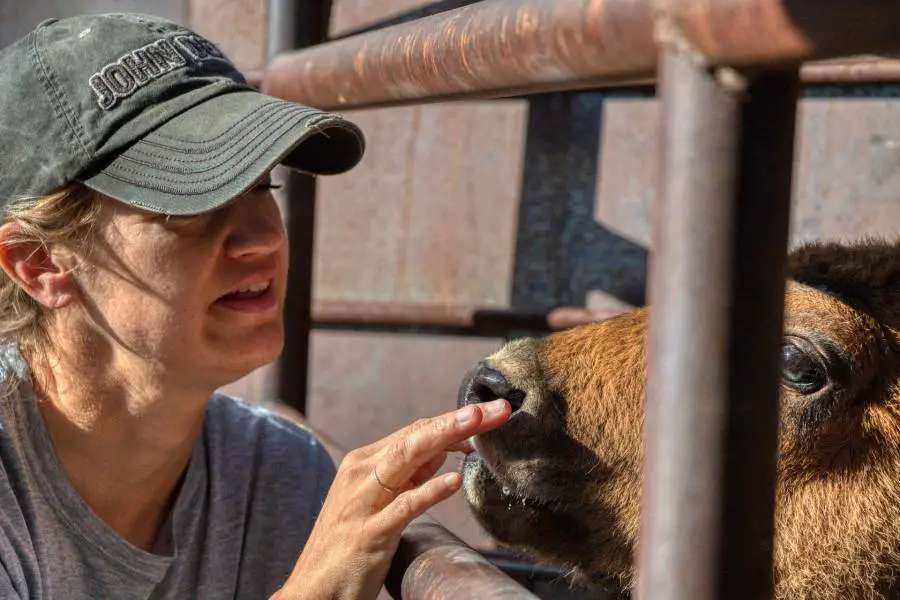Table of Contents
In January 2017, 1.3 million steers were slaughtered compared to 36,000 bulls in the United States.
From this statistic, we can infer that castration has proven economic advantages.
There are many methods of castrating livestock, with one of the most common being elastic band application (banding).

Generally, the main factors that influence the choice of castration method are the weight/age of the bull calf and operator preference.
From experience, cow-calf operators prefer banding while most veterinarians prefer cutting.
Here is what you need to know about calf banding.
What Is Calf Banding
Banding is one of the methods used to castrate calves. It is a simple medical procedure where elastic bands are used to cut blood supply to the scrotum.
Eventually, the supporting tissue gradually dies and detaches from the body, typically within ten days.
This procedure usually is done by licensed animal personnel to minimize discomfort.
Although it is usually a straightforward process with minimal complications, sometimes problems do arise.
Let’s look at some of the common problems associated with calf banding.
Problems Associated With Calf Banding
Tetanus And Blackleg Infections
Banding always carries the risk of infection for many reasons. The risk of infection is significantly higher if calves are banded much later after birth.
It is because of the extended exposure to tetanus-causing bacteria and other pathogens in the environment.
The ideal time to band your calves is immediately after birth or when they are less than one week old.
During this time, they are minimally exposed to disease-causing pathogens. However, this may not always be possible due to management or personnel constraints.
To reduce the risk of infections, you should vaccinate your calves with appropriate vaccines (8way Clostridial or CDT) when banding.
You can also administer a dose 2 – 6 weeks before banding and use a booster during the procedure.
At other times, infections may be caused by non-sterile equipment. It is likely to happen if you use old elastic bands and dirty equipment.
Since the elastrator band eventually breaks the skin, it can conduct harmful bacteria into the damaged areas and cause infections.
To prevent this from happening, use new rings and clean equipment. It is also essential to keep the calves’ environment clean to reduce the chances of infection.
Incomplete Castration
Another common problem that may occur is faulty banding. Certain conditions may cause one of the testes to remain in the calf’s body cavity.
When banding is done and one testis is left out, the result is a cryptorchid animal.
Cryptorchid calves are likely to exhibit bull-type characteristics such as aggression, lower carcass quality, and bull-like appearances.
Ensure that both testicles are in the scrotal sac under the band to avoid this problem.
Importantly, it would be best if you understood the anatomy of calves and also ensure they are well restrained before castration.
Breakages
Banding can also fail if the elastic band breaks or is not tight enough. It is likely to happen if you use old rubber bands that are not strong enough.
If the goal was to control reproduction, incomplete castration might mean the bull calf will still be fertile. To avoid this problem, use newly-bought banding rings.
As a rule of thumb, do not use elastic rings purchased more than 12 months from the date of castration.
Calves larger and fleshier are also much harder to the band and are likely to be incompletely castrated.
The animal deposits fatty tissues around the scrotum and inguinal areas as the animal grows.
The fat makes it harder to achieve complete blood constriction and the desired results.
It can be mitigated by banding the calves when they are younger (1 – 3 months old).

Growing Opposition By Animal Welfare Groups
In recent years, there has been growing opposition to castrating calves using physical methods.
Animal welfare groups have argued against painful castration methods like Burdizzo and rubber-ring castration.
Since these procedures are often performed without anesthesia, there is widespread concern about their ethicality due to:
Pain
Studies have shown that all physical castration methods cause pain, but some more than others.
For instance, a study measured the heart rates and blood pressures of 2-month-old newly banded lambs.
These variables remained abnormally high 4 hours after ring placement, suggesting pain persistence.
Other subsequent studies have identified behaviors associated with distress or pain in calves castrated when they are older.
A behavioral analysis of two cohorts of castrated calves showed that 21-day-old calves exhibited less pain-associated behavior than 42-day-old calves.
These studies based the presence of pain on reduced weight gain and slower growth.
There is widespread acceptance that banding causes the most prolonged chronic pain that can persist for weeks after the procedure.
For this reason, some European countries require that all castration activities on animals over a certain age be anesthetized.
Psychological Impact
Apart from the pain, scientific studies also contend that physical castration methods like calf banding also induce stress on livestock.
It is based on the high concentrations of plasma cortisol found in the blood of newly banded calves. High cortisol levels in the blood indicate high-stress levels.
A combination of ketoprofen and lidocaine is used to reduce the concentration of cortisol and lessen stress.
The increasing demand for humanely-raised animal protein presents a salient problem that ranchers can’t just wish away.
There is a growing niche market for beef from young uncastrated bulls.
This market is mainly driven by the attitudes of consumers who oppose castration due to animal welfare reasons.
Decreased Calf Performance
Improperly done banding can lead to decreased calf performance.
This problem is mainly a skills issue when the person performing the procedure is not technically skilled.
When banding is done incorrectly, it can cause considerable pain and discomfort, negatively affecting the animal’s performance.
Consequently, pain management is emerging as a critical area in livestock production.
Studies indicate that banded calves do not usually exhibit pain behavior immediately after banding.
However, reductions in weight gain and feed intake were observed after 3 – 4 weeks, indicating a slower healing process.
For example, a study showed that bull calves banded at nine months recorded slower growth rates for 30 days post-procedure.
However, despite showing increased food intake, they were less efficient in the feed-to-gain ratio.
Further, calves banded later in life had higher morbidity rates (17.5% to 38.4%) than those castrated early.
However, this problem can be mitigated by implementing banding best practices.
It’s empirically proven that banding calves at 1 – 3 months potentially reduce incidences that lead to decreased performance.
Conclusion
Banding is a popular castration method because it is bloodless and easier to perform, especially on young calves.
Carried out correctly, it has minimum health and performance complications. However, like other castration methods, it has associated problems.
The most common problem appears to be the likelihood of contracting infections like Tetanus and blackleg.
However, these infections can be avoided using vaccines and carrying out the procedure under hygienic conditions.
Even so, the pros of calf banding outweigh the cons. It explains why the practice is widespread among livestock producers.
Nonetheless, make veterinarians your primary source of information should you be uncertain about anything.








